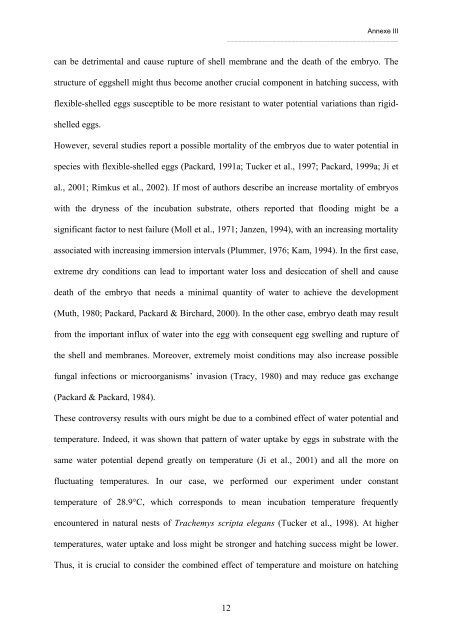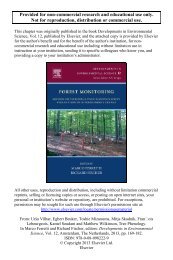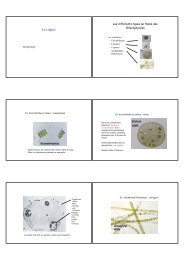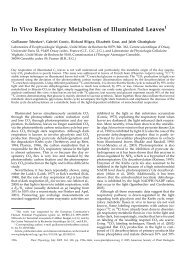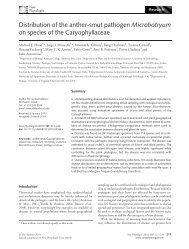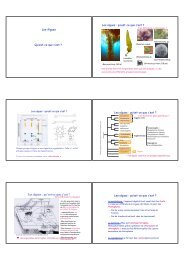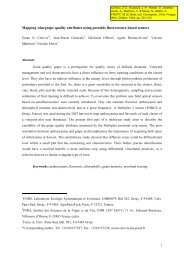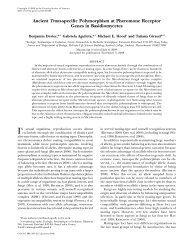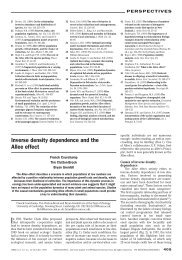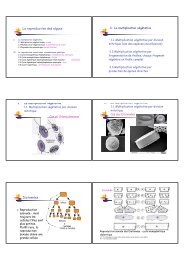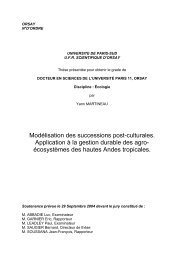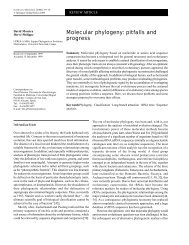Premiers - Outil de Suivi des Contrats
Premiers - Outil de Suivi des Contrats
Premiers - Outil de Suivi des Contrats
Create successful ePaper yourself
Turn your PDF publications into a flip-book with our unique Google optimized e-Paper software.
Annexe III<br />
_____________________________________________<br />
can be <strong>de</strong>trimental and cause rupture of shell membrane and the <strong>de</strong>ath of the embryo. The<br />
structure of eggshell might thus become another crucial component in hatching success, with<br />
flexible-shelled eggs susceptible to be more resistant to water potential variations than rigidshelled<br />
eggs.<br />
However, several studies report a possible mortality of the embryos due to water potential in<br />
species with flexible-shelled eggs (Packard, 1991a; Tucker et al., 1997; Packard, 1999a; Ji et<br />
al., 2001; Rimkus et al., 2002). If most of authors <strong>de</strong>scribe an increase mortality of embryos<br />
with the dryness of the incubation substrate, others reported that flooding might be a<br />
significant factor to nest failure (Moll et al., 1971; Janzen, 1994), with an increasing mortality<br />
associated with increasing immersion intervals (Plummer, 1976; Kam, 1994). In the first case,<br />
extreme dry conditions can lead to important water loss and <strong>de</strong>siccation of shell and cause<br />
<strong>de</strong>ath of the embryo that needs a minimal quantity of water to achieve the <strong>de</strong>velopment<br />
(Muth, 1980; Packard, Packard & Birchard, 2000). In the other case, embryo <strong>de</strong>ath may result<br />
from the important influx of water into the egg with consequent egg swelling and rupture of<br />
the shell and membranes. Moreover, extremely moist conditions may also increase possible<br />
fungal infections or microorganisms’ invasion (Tracy, 1980) and may reduce gas exchange<br />
(Packard & Packard, 1984).<br />
These controversy results with ours might be due to a combined effect of water potential and<br />
temperature. In<strong>de</strong>ed, it was shown that pattern of water uptake by eggs in substrate with the<br />
same water potential <strong>de</strong>pend greatly on temperature (Ji et al., 2001) and all the more on<br />
fluctuating temperatures. In our case, we performed our experiment un<strong>de</strong>r constant<br />
temperature of 28.9°C, which corresponds to mean incubation temperature frequently<br />
encountered in natural nests of Trachemys scripta elegans (Tucker et al., 1998). At higher<br />
temperatures, water uptake and loss might be stronger and hatching success might be lower.<br />
Thus, it is crucial to consi<strong>de</strong>r the combined effect of temperature and moisture on hatching<br />
12


